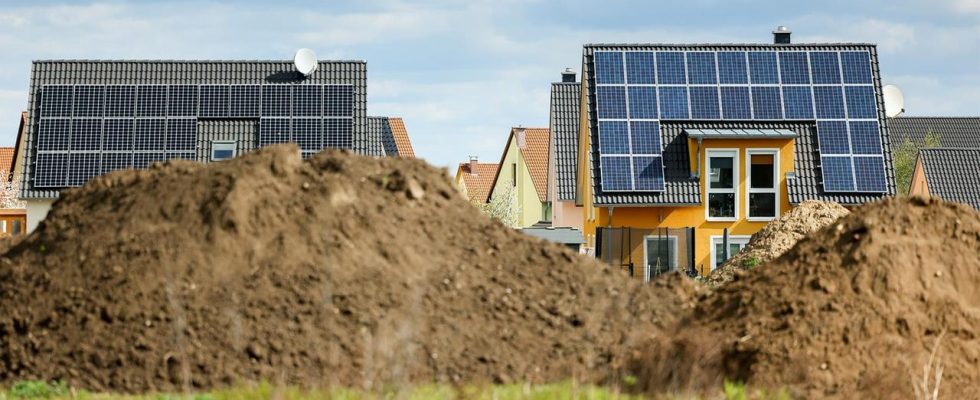faq
The Federal Constitutional Court has thwarted the government’s plans: the second supplementary budget for 2021 is unconstitutional. This means that many billions are missing for climate protection projects. How can things continue now?
It is a bitter defeat for the federal government: fixed loans of 60 billion euros cannot be used for climate protection. The Federal Constitutional Court declared the reallocation of funds in the 2021 budget to be unconstitutional.
At that time, an exception to the debt brake was made to combat the corona pandemic, so that the federal government was allowed to take out loans. Because these were not fully needed, the traffic light government moved the funds to the Climate and Transformation Fund (KTF) – a special fund separate from the rest of the budget. The reallocation only happened in 2022, i.e. retrospectively.
The Federal Constitutional Court argued that the supplementary budget violated the exceptional rule of the debt brake. The traffic light government did not conclusively explain what the Corona crisis, i.e. the reason for borrowing allowed in emergencies, and the climate programs have to do with each other. In addition, loans taken out in emergency situations cannot simply be used indefinitely without being counted towards the debt brake. And lastly: the decision came too late. A supplementary budget must be decided before the end of the year.
What does the ruling mean for the use of funds?
The 60 billion euros were already firmly planned for in the KTF – and are no longer there. After the verdict, Finance Minister Christian Lindner deleted the credit authorizations, i.e. the permission to take out the loans. But the pot is not completely empty. “There is still enough money in the climate and transformation fund so that the ban by the Federal Constitutional Court will not lead to immediate problems,” wrote the President of the German Institute for Economic Research (DIW), Marcel Fratzscher, on Platform X.
The government is setting priorities: In any case, funding for the replacement of old oil and gas heating systems should be paid next year. The funding programs for climate-friendly new buildings and the promotion of home ownership for families are also not affected by the stop, emphasized Building Minister Klara Geywitz.
And what happens next from 2025?
It looks critical there. The federal government wants to quickly draw up a new economic plan for the KTF. It should then become clear whether programs need to be dispensed with or at least be significantly weaker. The KTF actually planned program spending of at least 211.8 billion euros by 2027.
The Green party leaders Britta Haßelmann and Katharina Dröge emphasized that the programs were “extremely important for climate protection, relieving the burden on citizens and a sustainable economic policy.” They are at the core of government policy.
Greenpeace fears a severe setback for climate protection. “Now the fact that the traffic light wanted to pay for the climate-neutral restructuring of the economy with financial policy sleight of hand is now taking revenge,” complained the environmentalists. WWF Germany warned: “Saving the climate and biodiversity must not fail because of the debt brake.”
Which Climate protection projects could be affected?
The Climate and Transformation Fund, a special pot alongside the budget, has become the government’s all-purpose weapon in recent months. It includes programs for more climate protection, for the establishment of future technologies and the development towards a climate-neutral economy. Citizens and companies receive relief from electricity prices from the fund. There is a purchase bonus for electric cars. Further funds will flow into the hydrogen economy and the expansion of railways. State funding for the establishment of large semiconductor factories such as that of the US chip manufacturer Intel in Magdeburg also comes from the KTF. Research into climate-neutral flying and climate-friendly shipping is also supported.
Are there still conceivable ways out so that nothing has to be deleted?
The Karlsruhe judges explained: “If obligations already entered into can no longer be met as a result, the budget legislator must compensate for this in other ways.” Economists have already expressed ideas about how the federal government could get more money. The cleanest, fundamental solution is a reform of the debt brake, said economist Achim Truger. “For example, you could regulate that after a crisis you only have to return to the debt rule gradually.” The President of the Munich Ifo Institute, Clemens Fuest, believes it is conceivable that new debt will be limited to net investments.
Truger also suggested continuing to make use of the debt brake’s exception rule and declaring an emergency for several years because households would continue to be affected. Alternatively, missing income could be compensated for by charging a temporary energy or climate solidarity contribution.
All of these suggestions could be new explosives for the traffic light coalition. On the one hand, what is at stake are programs that are particularly important to the Greens. In addition, attitudes towards the debt brake vary widely: Chancellor Olaf Scholz (SPD) and Lindner and his FDP want to stick to it, while the Greens and the SPD as a party are repeatedly calling for a reform of the rule.
Still has the verdict more far-reaching Consequences?
This is currently being examined. It could have a fundamental impact on the budget policy of the federal and state governments, said Scholz. This is about dealing with debt-financed special assets in general. “This is the end of all shadow budgets, at least those that are financed by debt,” said Union parliamentary group leader Friedrich Merz.
The federal government currently maintains 29 special funds with debt options amounting to several hundred billion euros. The Union sees at least the 200 billion euro special fund for energy price brakes affected.
Source: dpa

